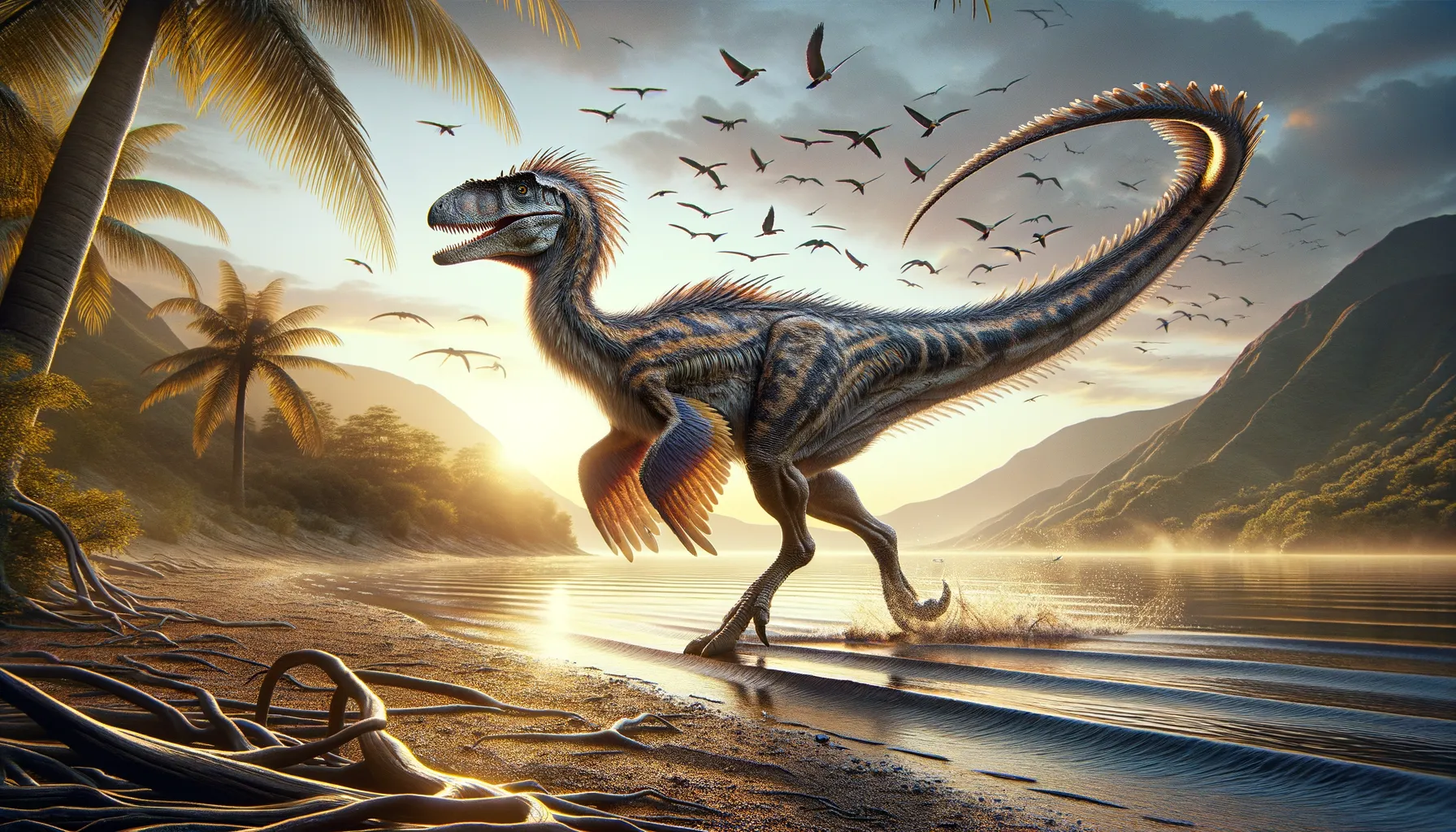
Yixianosaurus
Linking dinosaurs to modern birds.
Period
Cretaceous
Length
Roughly 1 meter from snout to tail.
Height
Approximately 30 centimeters at the hips.
Weight
Estimated to weigh around 1 kilogram.
Yixianosaurus is a feathered dinosaur that lived during the Early Cretaceous period. Known for its bird-like features, it provides significant insight into the link between dinosaurs and birds. Its fossils, found in Liaoning Province, China, showcase well-preserved impressions of feathers, offering a glimpse into its flight capabilities, which are believed to have been limited. This small theropod has intrigued paleontologists with its unique blend of avian and dinosaur characteristics.
Diet
Yixianosaurus was likely insectivorous, hunting for insects and small invertebrates. Its sharp teeth suggest a diet focused on soft-bodied prey.
Hunting
Hunting likely involved quick, agile movements to catch insects and small animals. Yixianosaurus might have used stealth and rapid strikes to capture its prey, leveraging its speed.
Environmental challenges
Living in the Early Cretaceous, Yixianosaurus faced a dynamic environment with changing climates. It had to adapt to both terrestrial and arboreal settings, competing for resources with other small dinosaurs and early birds. Occasional climate shifts could have influenced its feeding and nesting strategies. Volcanic activity in its habitat region might have posed intermittent threats, influencing migration and population dynamics.
Speed
Yixianosaurus was likely a fast runner, adept at quick bursts of speed.
Lifespan
It had a relatively short lifespan, similar to modern small birds.
First discovery
Discovered in the Yixian Formation of China in 2003.
Fun Facts
- Yixianosaurus lived around 124 million years ago during the Early Cretaceous period.
- It was discovered in the famous Yixian Formation in China, a hotspot for fossil discoveries.
- Yixianosaurus is known for its long, slender hands, which might have helped it catch prey.
- This dinosaur was part of the theropod group, which also includes famous relatives like Tyrannosaurus rex.
- Fossils of Yixianosaurus show it had feathers, suggesting it played a role in early bird evolution.
- Despite its prehistoric origins, the fossils of Yixianosaurus were only discovered and named in 2003.
- With its size similar to a crow, Yixianosaurus was relatively small compared to many other theropods.
Growth and Development
Yixianosaurus, much like many small theropods, likely experienced rapid growth during its early life stages. Its development trajectory may have been similar to that of modern birds, reaching maturity relatively quickly. Feathers would have begun to develop soon after hatching, playing a role in thermoregulation and potential display behaviors. Growth rings in its bones, if present, could provide insights into its physiological adaptations.
Habitat
Yixianosaurus inhabited a forested region with a mix of coniferous trees and ferns, providing cover and food resources. The presence of lakes and rivers suggests an environment with ample water supply, supporting diverse life forms. The ecosystem was rich in both flora and fauna, including early mammals, birds, and other dinosaur species. This lush habitat supported a complex food web, offering plentiful hunting opportunities for insectivorous dinosaurs.
Interaction with other species
Yixianosaurus likely coexisted with a variety of contemporary small dinosaurs, birds, and mammals. Its niche as an insectivore would have reduced direct competition with herbivorous and larger carnivorous species. Fossil evidence suggests potential interactions with early birds, sharing similar ecological roles. The presence of predators like larger theropods would have necessitated effective evasion tactics and alert behaviors.
Natural lifespan
Lifespan was likely between 5 to 10 years, considering its rapid growth and small size.
Reproduction
Reproduction involved laying small clutches of eggs, as evidenced by similar theropod nesting behaviors. Parental care might have been present, with one or both parents guarding nests from predators. Egg fossils found in similar formations suggest communal nesting areas. Incubation periods were possibly similar to those of small modern birds.
Social behaviour
Yixianosaurus may have exhibited social behaviors, such as foraging in groups to maximize feeding opportunities. Vocalizations or visual displays using its feathers could have played roles in communication. Flocking could have helped in spotting and evading predators, providing safety in numbers. Dominance hierarchies are less likely, given its dietary niche.
Fossil locations
Fossils were predominantly found in the Yixian Formation in Liaoning Province, China. This site has yielded numerous feathered dinosaur fossils, making it a significant area for paleontological research. The specific strata where Yixianosaurus fossils are found date back to the Early Cretaceous period. The preservation quality of its fossils is remarkable, especially regarding feather impressions and bone articulation.
